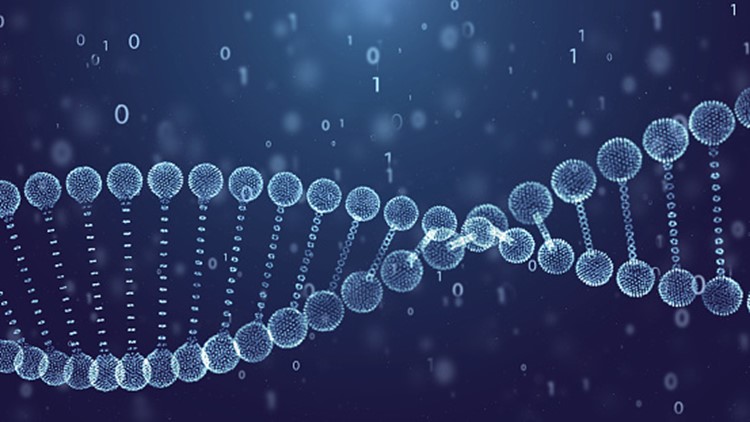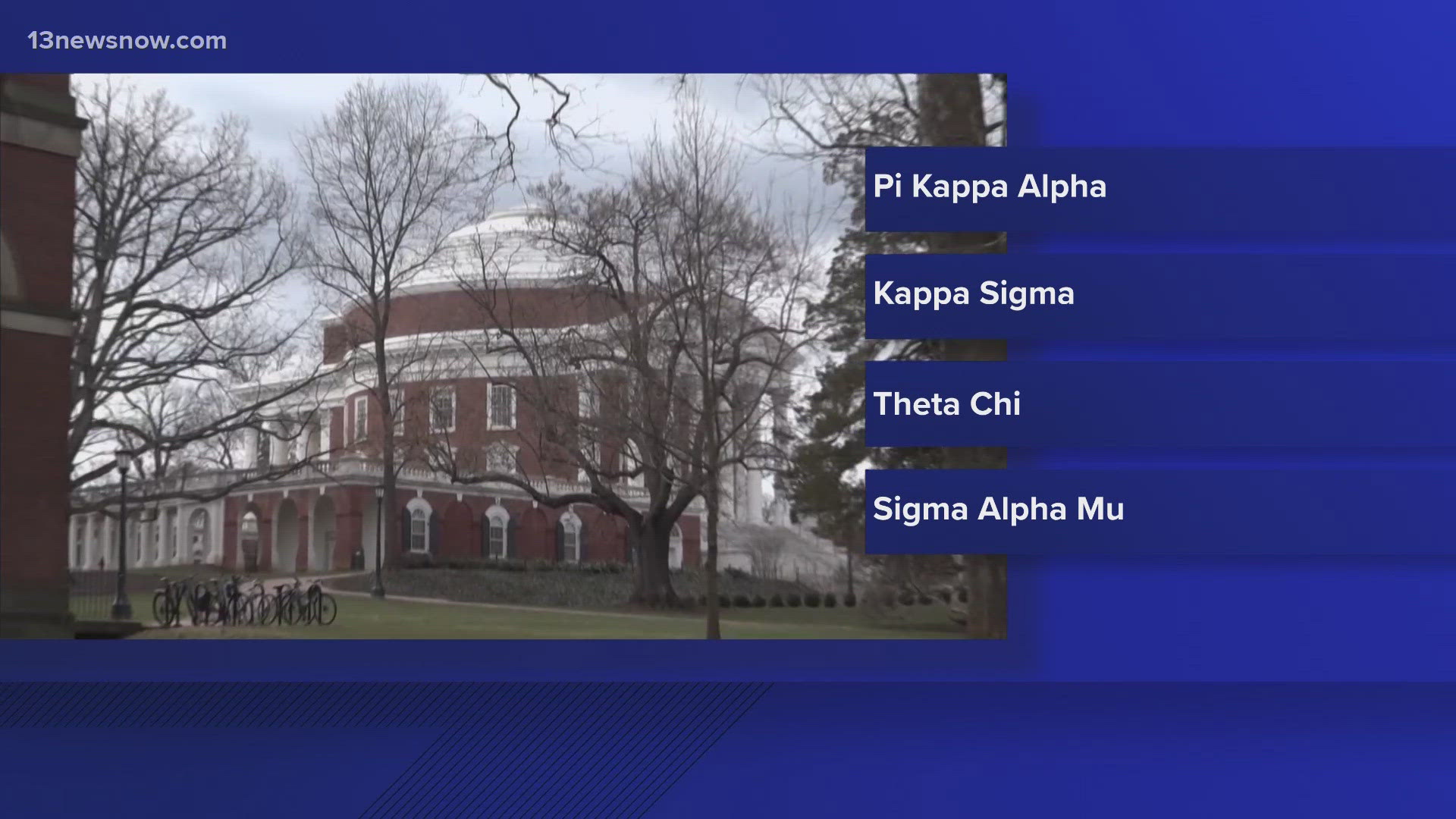CHARLOTTESVILLE, Va. (AP) — Soon after Christmas, one year apart, Barbara Dameron and Lundy Maxwell spat into tubes and mailed them to a genetic testing company.
Maxwell, who sent her test in February 2017, wanted to know more about her medical history. She thought she might learn more about half-siblings, connected by biological parents she had never met. She was adopted as an infant in Portsmouth in 1956, from a woman who said she could not take care of a baby.
There was no hint, at her adoption or later, Maxwell said, that her biological mother had placed another baby girl for adoption the summer before.
Dameron's husband gave her a 23andMe kit for Christmas 2017, she said, and she mailed the test in with trepidation and hope. She had tried to find biological relatives in 2001 but had received only a sheet of paper with names cut out - the Charlottesville Department of Social Services said it could not release any names. She was crushed, she said, and always continued to wonder if she had any living family.
"Mom," said Dameron's daughter, Ashley Jenkins, reading the results for her, "you have a sister."
Not just a sibling: the test indicated that they were full sisters, born less than a year apart. Barbara and Lundy met for the first time in March and in the six months since they have been building a relationship and trying to piece together more information about their family.
"I had always had that nagging space inside there; something was missing," Maxwell said, placing a hand over her heart. "I was 61 when I realized I had a sister."
The moment Barbara Dameron and Lundy Maxwell walked into Bonefish Grill in Charlottesville, they hugged, sat down and began talking.
"For three hours," Maxwell laughed.
Maxwell's laugh was one of the first things Dameron noticed. They marveled at their faces, similar shapes, and their hands. Each had been a nurse. There was no doubt, both said, that they were related.
Maxwell and Dameron have some information about their birth parents, but are wary of stirring up family secrets or bad memories.
"I think we both felt the same way, just sad for our mother," Dameron said. "I've never been angry at her; I just wanted to know a little bit about her and any family out there."
Their purpose in embarking on this process, they said, was to identify possible siblings and to learn more about their medical histories.
"I knew I had half-sisters," Maxwell said. "I didn't know anything about other siblings. I mainly wanted to do the DNA testing to learn more about my medical history."
Both of their biological parents have passed away. Still, they say, they would like more answers about their mother's circumstances and would like to connect with any other siblings or half-siblings. Their mother's maiden name was Mary Elizabeth Frazier, Maxwell knows from documents, and she married into the Maupin family. They later discovered that she had been a nurse at Martha Jefferson Hospital, where Barbara worked for years.
"I think one thing people don't understand when they're not adopted," Lundy said, "is that people like my husband know their roots. He knows where he got his hairline, his cheeks, his teeth. Sometimes they take it for granted, that ability to know. But for us, it's tough to not know our roots."
Jenkins said that her mother, Dameron, has always expressed interest in finding out what her mother had looked like and what they would have had in common.
"When she got the results in 2001 that she would never know any information on who her biological family was, it was heartbreaking," Jenkins said. "I remember hearing her cry about having to come to the realization she would never know anything or anyone, that she'd just have to be okay with that for the rest of her life. I remember crying for her. We never imagined sending the test off would bring back the results that it did."
According to the National Council for Adoption, the number of children adopted by a non-relative in the U.S. has been in decline since its peak in the 1990s. According to the most recent numbers available from the council, there was a total of 110,373 domestic, international and kinship adoptions in the U.S. in 2014.
In the 1930s and 40s, as adoption began to shift from an informal living arrangement to a legal means to create a new family, most states kept records secret in efforts to protect the reputations of unwed mothers, to maintain the privacy of adoptive families and to give children a clean break. After World War II, as Barbara found, many records were sealed even to the children concerned.
Efforts to reverse laws have made little progress until recently, but genetic testing is reopening family trees for adoptees even faster.
"I'd always watched TV shows about people finding their families, and just wished that was me," Barbara said.
23andMe allows people, for a fee, to send saliva samples that generate a person's genetic report. The testing kit allows people to learn their genealogy, see some genetic traits and screen for some genes involved in Alzheimer's, Parkinson's and breast cancer.
People can also sign up for the company's DNA Relatives feature - though they are cautioned that the information they receive might be unexpected. They will only see a match to another person if that person has also opted in.
The tests are reliable, said Scott Hadly, a spokesman for the company, though the company doesn't keep specific track of people who have found each other using the service.
The test analyzes variants in a person's DNA. About 50 percent of a person's DNA is inherited from their mother and 50 percent is inherited from their father, according to Hadly. A sibling may have inherited a different 50 percent from each parent, but by looking at where segments of DNA overlap and the size of the segments, researchers can reliably identify close relatives.
While lots of people use the tool for lighter purposes, such as checking a grandmother's claim of German ancestry or seeing if your blood makes you more attractive to mosquitoes, Hadly said he does often hear from people trying to fill in gaps of their family tree.
"I've been here a long time and it still raises the hair on the back of your head," he said. "Particularly to hear a story like Barbara's, where she'd been trying to find family for a long time and it was this test that made it happen."
Both sisters say they are grateful to 23andMe for helping them find each other.
"We are so blessed," Maxwell said, "because if she had done something else, or a different test, we wouldn't be in the same database."
Without hesitation, both sisters said they would recommend searching for family.
"Just have an open heart and an open mind; you might not know what you'll find," Dameron said. "The process can be really hard."
Over the past six months, the sisters have made up for lost time through lunches, visits and birthday parties with each other's children and grandchildren.
In her kitchen in Scottsville, Dameron keeps a plaque that says, "Family is life's greatest blessing." She recently hosted Maxwell's family for a potluck, cooking chicken, pasta salad and baked beans. They invited each other to grandchildren's birthday parties and are discussing holiday plans.
"I was an only child," Maxwell said. "When I was a little girl I always wanted a big family, and I feel so grateful now that I have them."



